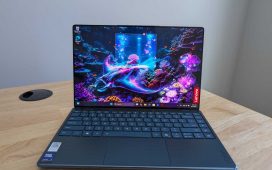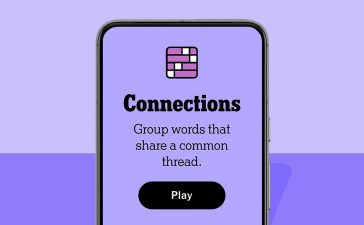It’s been just under nine years since Titanfall landed on the PC and Xbox, and just under nine years since publisher Electronic Arts has been underutilizing one of its most interesting and promising franchises. With the rumor that EA has canned a third Titanfall game after years of development, I think it’s time we look back on what this game was, what it could have been, and lamentably, what it never will be. What is Titanfall right now? A damn shame.
Part of the first wave of Xbox One titles and one of the console’s very few exclusives, the original Titanfall was the first game developed by Respawn Entertainment, which was founded by former executives of Call of Duty creator Infinity Ward. It made a splash from its introduction at E3 2013, wowing gamers with a mix of fresh, parkour-infused multiplayer shooting and the titular Titan mechs as a fresh addition to the genre. When it came out for the Xbox One, Xbox 360, and PC in the spring of 2014 it sold like hotcakes, perhaps helped by a somewhat tepid market at the time.
Unique modes and motion
Titanfall is, at its core, a fast-paced multiplayer shooter, as you might expect from the creators of Call of Duty. But with the sci-fi setting comes the opportunity to innovate, and Respawn did just that. It starts with the new, core mode of the standard multiplayer campaign mode: Assault. Both teams are supported by dozens of AI-controlled “grunts,” which have minimal weapons and armor, and none of the whiz-bang movement or special abilities of the player characters.
Players can zoom around the map focusing on taking out enemy grunts to rack up more points in a slower progression. This gives you plenty of targets on large, multi-level maps, where players on two teams of six might not intersect often outside of the control points. It also lets players who aren’t as familiar with the intense, super-twitchy gameplay of shooters like Modern Warfare and Battlefield reach for more attainable ways to contribute to their team’s victory.
Thoughtful use of the environment can annihilate groups of grunts and give you the advantage on players.
Another key innovation in Titanfall’s standard shooter setup was its movement. Player characters (“Pilots” in the game’s lexicon) can dash and bounce around the map almost as if it’s a Tony Hawk’s Pro Skater level, utilizing wall-running, double-jumping, and other parkour-inspired tricks. The expanded, free-flowing movement is an integral part of the combat. Quick, thoughtful use of the environment can annihilate groups of grunts and give you the advantage on head-to-head confrontations with other players, even if they’ve unlocked more powerful weapons and tools.
Titans bring the sci-fi spice
Then there’s the signature feature, the Titans. Each match begins with a countdown timer until your customized Titan, being built in an orbital factory, is ready to drop into the arena like a 10-ton trump card. You can take chunks of time off by killing enemy players or grunts or by achieving map objectives. Once it’s arrived on the battlefield, you can either hop into the cockpit and take personal control against the other team, or continue on foot and let your Titan’s AI do the shooting.

Respawn Entertainment
The chunky Titans might seem like they’re right out of MechWarrior, big, cumbersome metal beasts that are a sledgehammer to the footsoldier’s scalpel. But that’s not how it works in gameplay. While Titans are indeed bigger and slower than Pilots to make up for their more powerful weapons, they’re surprisingly fast and graceful, and can be made more so with tweaks applied between matches. In action they’re more like Gundams than tanks, and they make a wonderful counterpart to the whoosh-crikey movements of the pilots.
Combining gameplay with Pilots and Titans is where things get really spicy. While players on foot are of course more vulnerable, dying from one or two hits of the Titans’ giant weapons (or a viscerally squishy stomp or punch), the Pilot’s movement powers combined with the well-designed, multifaceted stages mean that you’ve still got a fighting chance even out of your personal giant robot. Specialized Titan-killing weapons, and the generally larger target that the Titans provide, mean that matches constantly weave and flow between Pilot and Titan combat as the steel behemoths are called in and destroyed. Pilots can even hop on the back of Titans, to rip open the enemy and shoot out its vital components or piggy-back on a friendly bot and shoot from its shoulder, like Rocket Raccon riding Groot.

Respawn Entertainment
Even the end of the multiplayer matches showcases innovation. Once one team or the other reaches the requisite amount of points, the losers will be directed to an extraction point. Getting to the dropship (or alternately, killing the fleeing players or destroying the ship) makes for an entertaining mini-game that utilizes all of the skill and strategy of the primary mode, eventually allowing the losers to snap a bit of validation for a 10-minute match. Or, of course, get an extra heap of humiliation on top of it.
The sequel adds a story
The first Titanfall reviewed well, but it seemed to lose steam after a couple of months. Part of this may have been its multiplayer-focused setup. The game’s short development time and relatively small development team meant that the story campaign, a rather placid tale of evil corporations and space rebels, was sandwiched into the multiplayer mode. Since the outcome of each story mission had to work in the narrative whether the rebels or the corpos won, there was very little tension or stakes.
Titanfall 2 launched with the focus squarely on the now fully-realized singleplayer campaign. It worked.
It basically boiled down to the same maps and modes you’d get in standard multiplayer, with some talking heads occasionally shouting at you from the corner of your screen. Reviewers noted the lack of variety and dinged the game accordingly. It didn’t help that EA wanted full price for this multiplayer-only title. With Titanfall 2, which released just two years later, Respawn would remedy this deficiency in a big way.

Titanfall 2’s story mode focused on the relationship between the player and BT, your Titan robo-buddy.
Respawn Entertainment
Titanfall 2 launched with the focus squarely on the now fully-realized singleplayer campaign. It worked. Both gamers and critics praised the mode, which gently introduced players into the combination bounce-house shooting/robot punching gameplay. You play as…honestly I can’t remember who the player character is, because he’s a blank slate for the personality of the Titan he inherits to play off. BT the giant robot might not be the most original AI character ever, but he has just enough charm and comedy in his writing to add a little enjoyment to the excellent levels and boss fights.
One level in particular caught the eye of the gaming public: Effect and Cause, which utilized a time travel doohicky reminiscent of the core mechanic in The Legend of Zelda: Link to the Past. With a combination of parkour shooting, mech piloting, and carefully triggering events in the past timeline to affect the present, it’s still considered one of the best singular levels in any modern game.
With incredibly unique multiplayer (now enhanced by grappling hooks and more Titan variety) and a single-player campaign head and shoulders above most of the competition, Titanfall 2 was poised to make a huge impact, like a giant robot dropping from orbit.
EA’s self-sabotage
Unfortunately, Titanfall as a franchise couldn’t catch a break. Titanfall 2 released at almost the same time as two other gigantic shooters in October 2016. Call of Duty: Infinite Warfare directly lifted several of the movement mechanics from the original Titanfall, and included AI robot characters as a deep part of its single-player campaign. And if that wasn’t enough, EA released its own competition just a week before, the critically-acclaimed Battlefield 1.

Titanfall 2 was released at almost the same time as blockbuster shooters from Activision and EA itself.
EA/Activision
With the two biggest shooter franchises duking it out on store shelves, Titanfall 2 was left in the dust. Perhaps owing to a lack of a breakout hit years after the studio was founded, and likely more to the general consolidation of the game industry via mergers and acquisitions, Respawn was fully acquired by EA in 2017.
Titanfall 2 managed to be a sleeper success nonetheless, getting big influxes of players every time it went on sale. Coming to the PS4 — excluded from the first game’s release for licensing reasons — probably helped. But with a profile far lower than the original game, the writing seemed to be on the wall.
Respawn moves on
Respawn’s next release was the free-to-play Apex Legends, which is nominally set in the same universe as Titanfall and has some of the same parkour movement. But Apex lacks the signature Titan giant robots and comes with a much more sarcastic, Borderlands-esque feel. It’s also a battle royale in the mode of PUBG or Fortnite — not exactly what Titanfall players were hoping for.

Respawn’s two post-Titanfall games, Apex Legends and Jedi Fallen Order, were both hits.
Respawn Entertainment
After Apex, which remains a popular freemium game to this day, Respawn released Star Wars Jedi: Fallen Order. A single-player only game, translating the structure and difficulty of Dark Souls to the Star Wars universe, Fallen Order was a major departure for both Respawn and EA. The publisher gave the game a full court press of media support, taking advantage of the release of The Rise of Skywalker in theaters shortly thereafter. It worked: the game was critically acclaimed and a major seller. The sequel is coming out later this year.
Titanfall seems to be a victim of Respawn’s more recent successes.
With Apex Legends and the Jedi series both going strong, and the developer remaining a relatively small company even as a full EA subsidiary, Titanfall seems to be a victim of Respawn’s more recent successes. A small group of dedicated fans can’t keep EA from seeing dollar signs with lucrative free-to-play models and mega media licenses. Titanfall 2 remains a must-play for its single-player campaign alone, but multiplayer servers for the original game are abandoned, and even the sequel is a ghost town with apparently unchecked cheating issues.
Goodbye, robot friends
I never got into Apex, but I was a big fan of Fallen Order. Frankly, it’s the Dark Souls for people who don’t like Dark Souls, a sort of store brand take on the hard-as-nails formula with a story that doesn’t make you work for every last scrap of narrative. But I’d trade it for another Titanfall game in a heartbeat. The shooter’s mix of fast-paced ground movement and meaty robot fighting was utterly unique, and gaming is poorer as a medium now that its multiplayer is more or less gone.

Respawn Entertainment
EA and/or Respawn scuppering the third Titanfall game doesn’t necessarily mean that the franchise is dead. But with Respawn’s hands full with two successful franchises, and EA apparently trimming its corporate fat, the odds of seeing it reemerge anytime soon are slim to none. It’s enough to make even an AI-powered giant robot cry.












